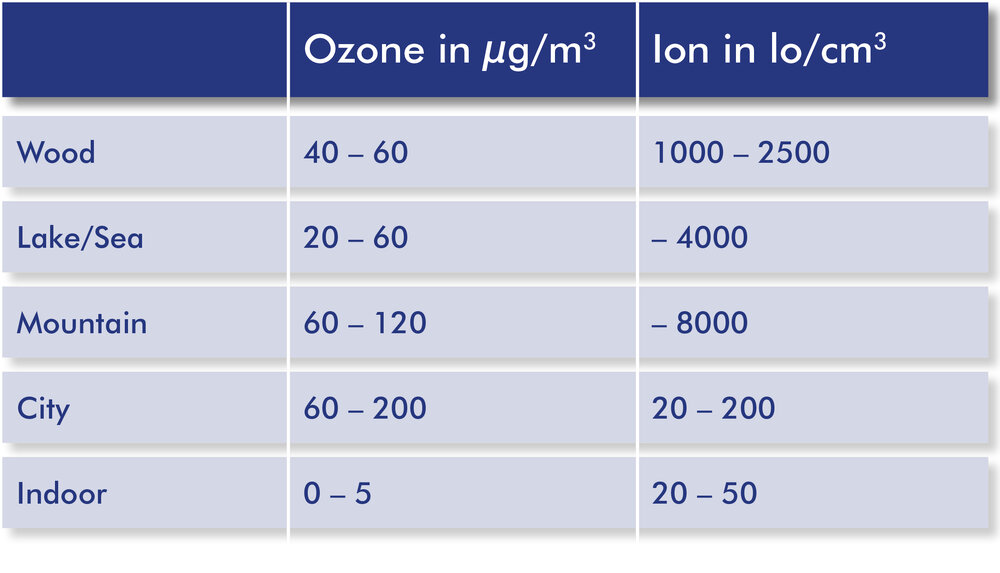The fine odor of fresh air
Every human being notices the quality of indoor air or simply air quality in a room differently. Comfort is perceived via the nose and its olfactory sensors. The human being is conditioned in such a manner that he or she reacts to changes or unexpected olfactory events with a higher degree of attention. As a result of evolution, this capability ensures survival and it is an inborn instinct. We also observe the survival phenomenon with a baby: he/she smells his/her mother and finds her without having to open his/her eyes.
The olfactory sense is also reflected in everyday linguistic use. The figure of speech «We cannot smell someone» hits the nail on the head and what we mean with this regarding whether we like someone or not. A specific odor, for example that of cut grass, the odor of spouse, the odor in the forest, your own workplace or a glass of good wine may have a comfortable effect on someone, but, at the same time, may tend to be repellent for another person. This is why human beings assess neutral air quality as positive in most cases. Therefore, the air in the mountains or at the seaside is assessed as being good by all human beings. Why is this so? We are convinced that the body reacts neutrally because the air is free of nuisance-producing substances (odorants, VOCs, exhaust gases) and is heavily enriched with activated oxygen (oxygen ions, natural quantities of ozone, atomic oxygen).

The body does not go to an alarm condition as described above, but remains relaxed with neutral air quality. Consequently, under ideal circumstances, good quality of indoor air is equivalent to natural pure air as we human beings feel in the mountains, at the seaside, after a unifying thunderstorm or the air early in the morning. This is pure air which human beings have adapted to with evolution.
What do the national and international standards such as, for example, ASHRAE 62.1, DIN EN 13779, VDI 6022, SWKI 104, SIA 382.1 or JSRAE have to say about indoor air quality? What all standards have in common is that five factors have a significant impact on the indoor air quality.
These are:
- Quality of the outdoor air
- Noxious gas emissions in the building
- Air movement in the room
- Volume of supply air
- Change in the quality of air in the entire ventilation system

Moreover, all standards classify the various types of air such as supply air, indoor air, recirculation air, exhaust air etc. (for details refer to the graphical picture 1-12) contain unambiguous classifications about the quality of indoor air. Recommendations are submitted about the conditions under which reasonably conducive indoor air quality can be achieved. The standards represent the state-of-the-art.
The standards basically define the air quality of the various types of air based on the following pollutants: CO2, CO, NO2, SO2, PM10, PM2.5, VOC and Olf. VDI 6022 defines three assessment classes, which, if required - if the existence of an odor problem is suspected - are applied step-by-step.
Achieving good indoor air quality is always done in accordance with the principles of weighing up the pros and cons. Minimizing the pollutants or reducing them to a «natural» level are an important requirement in the process. Nevertheless, even the space requirement or the costs play an important role. It is the job, primarily in a planning phase, of the architect and the HVAC designer to endeavor to formulate an optimal solution jointly with the building owners. Subsequent operators and users of the building will thank the designers and planners if the indoor air quality is kept intact.

ionair commits itself unrestrictedly to complying with the country-specific standards and actively involves itself internationally in the exchange with standards committees in their continuous advanced development. In reality, the indoor air quality often does not meet the expectations. One can improve the indoor air quality decisively with the ionair Air Quality System (AQS). It is from these practical findings that the groups addressed then often derive the standardized use of ionair solutions.


















